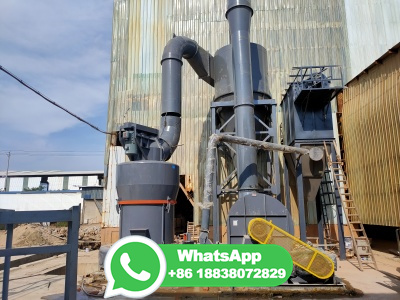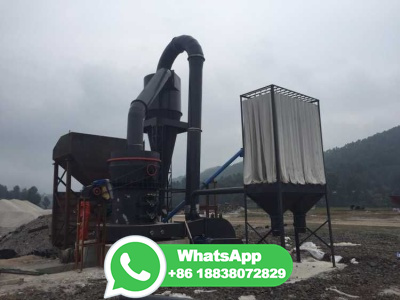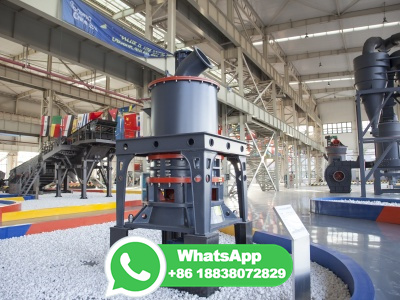
Iron ore sintering is one of the key steps in the ironmaking process, where granulated pellets are transformed into sinter in the sintering machine, providing an ideal raw material for ironmaking blast furnace. Drum granulation in the sintering process plays an essential role in determining the final sintering performance.
WhatsApp: +86 18203695377
Hydrogen plasma smelting reduction (HPSR) of iron ore is the process of using hydrogen in a plasma state to reduce iron oxides. A hydrogen plasma arc is generated between a hollow graphite ...
WhatsApp: +86 18203695377
In the HPSR process, the type of iron ore or ironcontaining residuals affects ore reduction by hydrogen. The process eliminates the prior agglomeration process, and iron ore fines can be directly introduced. The process is compared with fluidized bed reduction, which uses hydrogen as a reducing agent and fine ore as feed material.
WhatsApp: +86 18203695377
Coke (fuel) Raw coke. Coke is a grey, hard, and porous coalbased fuel with a high carbon content and few impurities, made by heating coal or oil in the absence of air—a destructive distillation process. It is an important industrial product, used mainly in iron ore smelting, but also as a fuel in stoves and forges when air pollution is a ...
WhatsApp: +86 18203695377
To produce one ton of iron, you needed 1 ¾ tons or ore, ¾ ton of charcoal, ¼ ton of limestone and 4 tons of air. Before the furnace was started, all of the materials had to be placed in the furnace. The first layer was charcoal, then a layer of limestone and then a layer of iron ore.
WhatsApp: +86 18203695377
the 1990s in the treatment of iron ore and coal mixtur e to obtain steel in a single vessel [22]. ... although such an approach is not a smelting process. Dong et al. [37] described in detail the ...
WhatsApp: +86 18203695377
Humans have been extracting iron from its ores since . . . well, since the dawn of the Iron Age, over 3,000 years ago. Smelting traditionally took place in bloomeries, small furnaces filled with burning charcoal and iron ore containing hematite (Fe 2 O 3) or magnetite (Fe 3 O 4). Bellows forced air through the furnace to make carbon monoxide ...
WhatsApp: +86 18203695377
Wire "A" was filled with iron ore, whereas wire "B" in addition to the iron ore contains further small amounts (<1 wt%) of Na and Kbased compounds whose lower ionization energy has the potential to stabilise the arc transfer, a fact that positively contributes for an efficient reduction process [21].
WhatsApp: +86 18203695377
... The quest for the production of iron and steel under clean energy evolution cannot be overemphasized. The negative impact of carbon emissions released from the Schematics of iron and steel...
WhatsApp: +86 18203695377
Home Technology Industry Iron making The primary objective of iron making is to release iron from chemical combination with oxygen, and, since the blast furnace is much the most efficient process, it receives the most attention here.
WhatsApp: +86 18203695377
Iron processing Ores, Smelting, Refining: Iron ores occur in igneous, metamorphic (transformed), or sedimentary rocks in a variety of geologic environments. Most are sedimentary, but many have been changed by weathering, and so their precise origin is difficult to determine. The most widely distributed ironbearing minerals are oxides, and iron ores consist mainly of hematite (Fe2O3), which ...
WhatsApp: +86 18203695377
iron processing, use of a smelting process to turn the ore into a form from which products can be fashioned. Included in this article also is a discussion of the mining of iron and of its preparation for smelting. Iron (Fe) is a relatively dense metal with a silvery white appearance and distinctive magnetic properties.
WhatsApp: +86 18203695377
Keywords: iron ore; assay experiment; bloomery smelting; iron slag; southern Levant; mu e furnace 1. Introduction Iron was produced in antiquity in most parts of the world, via a direct method—the bloomery process. Archaeological evidence, mainly as slag, for the use of the bloomery process, and secondary
WhatsApp: +86 18203695377
A typical pyrometallurgical copper smelting process, as illustrated in Figure, includes 4 steps: roasting, smelting, concentrating, and fire refining. Ore concentration is roasted to reduce impurities, including sulfur, antimony, arsenic, and lead. The roasted product, calcine, serves as a dried and heated charge for the smelting furnace.
WhatsApp: +86 18203695377
Six steps to process iron ore. 1. Screening. We recommend that you begin by screening the iron ore to separate fine particles below the crusher's CSS before the crushing stage. A static screen is used to divert the fine particles for crushing. This step prevents overloading the crusher and increases its efficiency.
WhatsApp: +86 18203695377
In 2011, manufacturers produced around 100 billion metric tons of iron globally. From mining ores to smelting to tempering alloys, the process is energy intensive, and engineers have chased ...
WhatsApp: +86 18203695377
Smelting is a form of extractive metallurgy to produce a metal from its ore. Smelting uses heat and a chemical reducing agent to decompose the ore, driving off other elements as gasses or slag and leaving just the metal behind. ... Unlike the COREX® process, fine iron ore is charged into a series of fluidized bed reactors together with fluxes ...
WhatsApp: +86 18203695377
The smelting reduction reaction of iron ore, which is the core reaction of the process, is greatly significant to its productivity and energy saving. Therefore, this paper focuses on the behavior and mechanism of iron ore's smelting reduction.
WhatsApp: +86 18203695377
About Newgen Software. Newgen is the leading provider of a unified digital transformation platform with native process automation, content services, communication management, and AI/ML capabilities. Globally, successful enterprises rely on Newgen's industryrecognized low code application platform to develop and deploy complex, contentdriven, and customerengaging business applications on ...
WhatsApp: +86 18203695377
A foundry worker guides molten iron into moulds at an ironore mill. ... Chang said, over the statusquo process of smelting ore to make metal, melting the metal to make material, melting material ...
WhatsApp: +86 18203695377
The smelting reduction of iron ore in SRV consists of the two following models (shown in Figure1). (1) Solid iron ore is injected into an iron bath melt where heat transfer, reduction, and melting steps are completed (as shown in Figure1a). In the HIsmelt smelting reduction process, the melt temperature of SRV can be up to 1400 C. When iron ore is
WhatsApp: +86 18203695377
On 23 March 2023, BHP signed an agreement with global engineering firm Hatch to design an Electric Smelting Furnace (ESF) pilot plant with the aim of demonstrating a pathway to lower carbon dioxide (CO 2) emissions intensity in steel production using iron ore from our Western Australia Iron Ore (WAIO) mining pilot plant will be a vital asset to seek to optimise and derisk the ...
WhatsApp: +86 18203695377
Physical and chemical process: reduction reaction at high temperature + slagging reaction. The purpose of blast furnace smelting is to reduce iron from iron ore and remove impurities. In the whole smelting process, the most important is the reduction of iron and slagging reaction. In addition, it is accompanied by a series of other complex ...
WhatsApp: +86 18203695377
The Iron Age was a turning point in the history of the Land of Israel. Iron tools began to appear around 3,000 years ago, gradually supplanting the softer copper and bronze tools. It was also a time of dramatic political change, as the Hebrew kingdoms, Judah and Israel began to take shape, which may or may not have to do with the advent of iron.
WhatsApp: +86 18203695377
Smelting is a process of applying heat and a chemical reducing agent to an ore to extract a desired base metal product. [1] It is a form of extractive metallurgy that is used to obtain many metals such as iron, copper, silver, lead and zinc.
WhatsApp: +86 18203695377
Anthracite iron or anthracite pig iron is iron extracted by the smelting together of anthracite coal and iron ore, that is using anthracite coal instead of charcoal in iron was an important technical advance in the late1830s, enabling a great acceleration of the Industrial Revolution in the United States and in Europe.
WhatsApp: +86 18203695377
The entire process of gathering and smelting iron ore could result in the production of impurities and slag. Second, forging newly extracted metal into any shape is a timeconsuming process. To shape a piece of metal, you may need to hammer it for hours, reheat it, and then pound it again.
WhatsApp: +86 18203695377
During this process the water content of the iron ore is released, and its structure becomes looser, which makes it easier to smelt. Finally, we break up the burnt iron ore into 23 cm pieces to make it easier to load the iron ore into the furnace during the smelting process (See Figure 3). Step 3. Building furnaces.
WhatsApp: +86 18203695377
Smelting. Smelting is the general term for getting a metal from its natural ore. Gold is an exception because it is usually found as a pure metal. Other metals, like iron, copper, zinc, and silver, need to be got from their ore. The process of smelting always involves heating the ore, and may also use a reducing agent like coke or charcoal.
WhatsApp: +86 18203695377